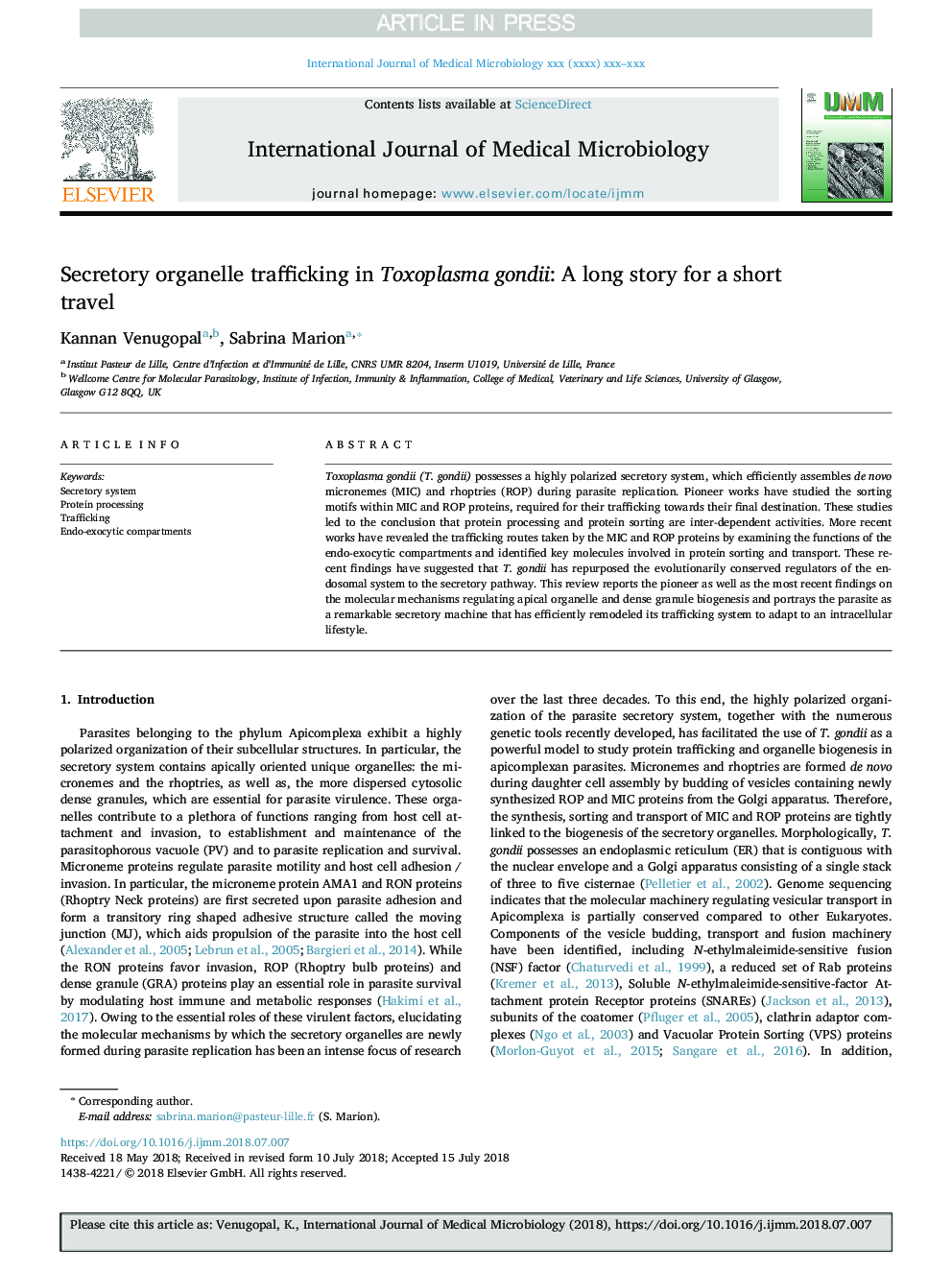| Article ID | Journal | Published Year | Pages | File Type |
|---|---|---|---|---|
| 10157213 | International Journal of Medical Microbiology | 2018 | 10 Pages |
Abstract
Toxoplasma gondii (T. gondii) possesses a highly polarized secretory system, which efficiently assembles de novo micronemes (MIC) and rhoptries (ROP) during parasite replication. Pioneer works have studied the sorting motifs within MIC and ROP proteins, required for their trafficking towards their final destination. These studies led to the conclusion that protein processing and protein sorting are inter-dependent activities. More recent works have revealed the trafficking routes taken by the MIC and ROP proteins by examining the functions of the endo-exocytic compartments and identified key molecules involved in protein sorting and transport. These recent findings have suggested that T. gondii has repurposed the evolutionarily conserved regulators of the endosomal system to the secretory pathway. This review reports the pioneer as well as the most recent findings on the molecular mechanisms regulating apical organelle and dense granule biogenesis and portrays the parasite as a remarkable secretory machine that has efficiently remodeled its trafficking system to adapt to an intracellular lifestyle.
Keywords
Related Topics
Life Sciences
Biochemistry, Genetics and Molecular Biology
Biochemistry, Genetics and Molecular Biology (General)
Authors
Kannan Venugopal, Sabrina Marion,
